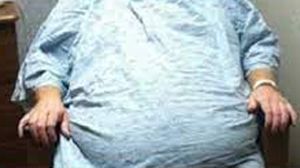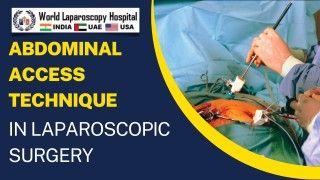Laparoscopic Repair of Recurrent Incisional Hernia by Prolene Mesh
Add to
Share
160 views
Report
1 month ago
Description
Recurrent incisional hernia is a challenging condition that often occurs at the site of previous abdominal surgery. It can cause pain, discomfort, cosmetic concerns, and even serious complications like bowel obstruction. Traditional open surgery for recurrent hernia carries higher risks due to scar tissue, adhesions, and compromised abdominal wall integrity. In this context, laparoscopic repair using Prolene mesh has emerged as a minimally invasive, effective, and safe treatment option. Understanding Recurrent Incisional Hernia An incisional hernia develops when the abdominal wall fails to heal properly after surgery, allowing internal organs or fat to protrude through the weak area. Recurrence may result from: Infection at the previous surgical site Poor wound healing Obesity or increased intra-abdominal pressure Technical issues from the initial repair Why Laparoscopic Repair? Laparoscopic repair offers several advantages over open surgery: Minimally invasive: Small incisions reduce postoperative pain and scarring. Faster recovery: Patients can resume daily activities sooner. Lower infection risk: Reduced wound exposure decreases infection rates. Better visualization: The laparoscope allows clear identification of adhesions, defect edges, and optimal placement of mesh. Reduced recurrence: Proper tension-free mesh placement reinforces the abdominal wall. Role of Prolene Mesh Prolene mesh, made of polypropylene, is widely used due to its strength, flexibility, and biocompatibility. In laparoscopic repair, the mesh acts as a tension-free reinforcement of the weakened abdominal wall. Key features include: Durability: Long-lasting support to prevent recurrence. Tissue integration: Mesh allows fibrous tissue ingrowth, strengthening repair. Customizable size: Can be trimmed to cover large or complex hernia defects. Surgical Technique Patient Preparation: General anesthesia is administered, and the abdomen is prepared. Port Placement: Small incisions (usually 3–5) are made for laparoscopic ports. Adhesiolysis: Scar tissue and adhesions from previous surgery are carefully dissected. Defect Identification: The hernia defect is measured, and surrounding tissues assessed. Mesh Placement: A Prolene mesh is introduced, positioned over the defect, and fixed with tacks or sutures. Closure and Recovery: Ports are closed, and the patient is monitored. Most patients can be discharged within 24–48 hours. Postoperative Care Pain is typically mild and managed with oral medications. Light activity is encouraged; heavy lifting is restricted for several weeks. Follow-up imaging may be done to ensure proper mesh placement and healing. Outcomes Laparoscopic repair with Prolene mesh has shown: High success rates with low recurrence Reduced postoperative complications Shorter hospital stays and quicker return to work Improved cosmetic outcomes Conclusion For patients with recurrent incisional hernias, laparoscopic repair using Prolene mesh represents a safe, effective, and minimally invasive option. With careful surgical planning, skilled technique, and proper postoperative care, patients can expect significant relief from symptoms and a durable repair.
Similar Videos






